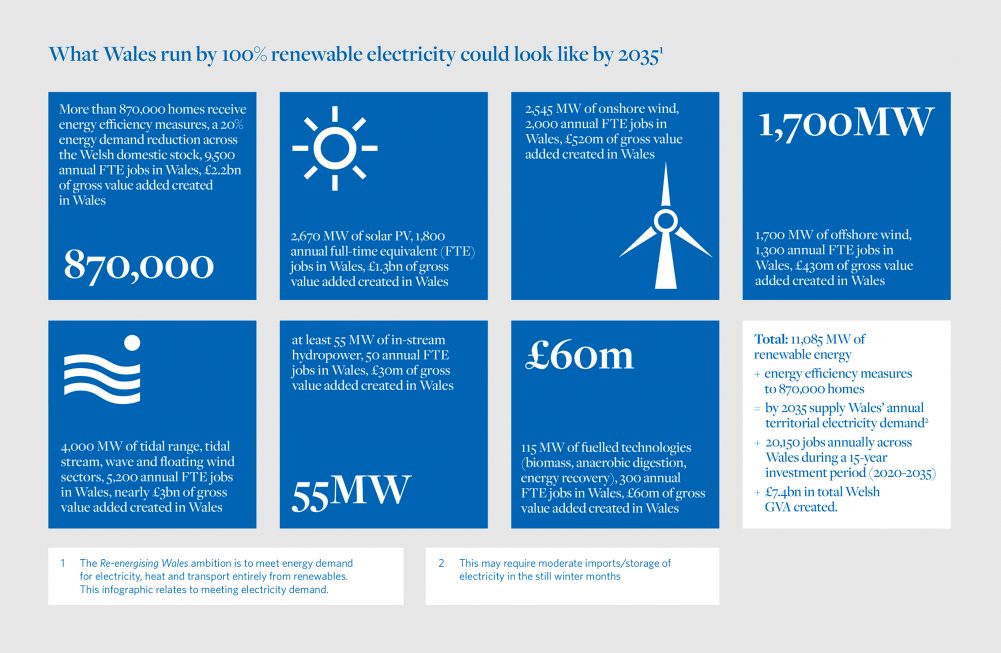Shea Buckland-Jones introduces the IWA’s plan for Wales to meet its projected energy demands entirely from renewable sources by 2035.
Today is the day we launch our final Re-energising Wales report A plan for Wales’ renewable energy future: Essential actions to re-energise Wales by 2035. Getting to this point has been a culmination of three years’ painstaking work with our partners and Steering Group members.
Back in 2016, the IWA Re-energising Wales project was quick to point out that Wales had a major opportunity around renewable energy. This was evident in the project’s ambitious objective to deliver a plan to enable Wales to meet its projected energy demands entirely from renewable sources by 2035.
Three years later, we now have the numbers and evidence to prove this is possible. We believe that Wales has a major opportunity to make renewable energy part of our national identity.
We have the opportunity to begin a cleaner, greener chapter in our industrial story, but bold leadership is required to achieve this vision.
The way forward will be challenging and radical change is essential if we are to take advantage of the huge opportunity on offer. Wales could create 20,150 jobs annually by switching to 100% renewable electricity alone by 2035. This change would also create £7.4 billion in total Welsh gross value added and have a substantial impact on the country’s ability to meet its climate change targets.

This report A plan for Wales’ renewable energy future is the 10th publication under the Re-energising Wales project. The report draws on evidence from the other publications to set out 10 urgent and essential actions for transitioning to a renewable energy future. These priority interventions include:
- Fund the future: Wales’ new First Minister should commit to 12 to 18 months of low carbon economic stimulus funding to immediately accelerate action on renewable energy and energy efficiency
- Renew Wales’ homes: through improved building standards and a long-term greener homes programme to implement energy efficiency measures in 870,000 homes
- Use local land for local benefit: ensure that planning regulations and public land are used to support new renewable energy schemes and maximise local gains
- Future-proof the electricity grid: ensure the grid is ready to meet Wales’ energy aspirations
- Get ahead in marine: coordinate government, industry, academia and others to establish a global advantage by making marine energy and floating offshore wind technology niche Welsh services
- Decarbonise transport: through a comprehensive ‘Transport Decarbonisation Plan’ co-produced by key public bodies and the transport sector and backed up by a national travel survey.
Wales is starting to reshape its energy generation and is at a crucial point in terms of ensuring that our energy system is fit for purpose now and for the future. We need to be bold about the potential of renewable energy to underpin the country’s economic foundation and to deliver our national and global obligations.
Our plan is radical and requires shared public and political ambition.
The time to tackle climate change is quickly running out.
We shouldn’t be living in a society in 2019 where air pollution is contributing to 2,000 deaths a year in Wales.
Our plan shows how we can write a cleaner, greener chapter in Wales’ industrial history.
The time for action is now.






Might be an idea to read this too for a bit of balance…
The Crisis of Europe’s Green Energy Agenda
https://www.thegwpf.com/content/uploads/2019/03/Amsterdam-Peiser-min.pdf